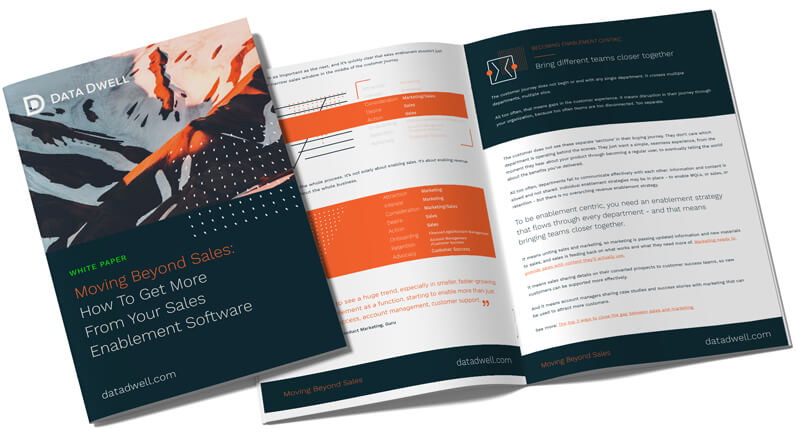
Discovery calls are one of the most important aspects of the sales process. As well as giving you, a salesperson, the chance to understand more about the prospect’s situation, they set the tone for all future interactions between you and the buyer.
A well planned and executed discovery call will lay the foundation for a positive relationship. You’ll get to understand the wants and needs of the prospect, you’ll establish their priorities and you’ll determine their different pain points. This is crucial information to any successful sale.
A discovery call can make or break your sales success.
Here we look at six easy ways you can improve your discovery calls:
1. Research your prospect
Before you pick up the phone it’s essential that you do your research. You should be finding out about the individual you’re going to talk to as well as the company they work for.
Doing this groundwork ahead of the call gives you the insights you need to craft detailed questions and prompts that will get you the most valuable answers.
Start with the company. Find out when it opened and how it has grown since then. Look into its recent successes or failures and whether they have worked with a company similar to yours previously. Another great insight is the type of content they are sharing or engaging with as a business.
It’s also crucial that you investigate the industry as a whole:
-
- How is it performing?
- Are there any gaps or opportunities?
- Where does this business currently sit in the industry?
Finally, do your research on the individual you will be speaking with. Focus on their role within the business and how this might have changed over recent years. Try and figure out how much authority they have within the organisation and what they are in charge of. And always check they haven’t connected with someone else in your business first.
A personal touch goes a long way too. If they’ve shared anything personal onto their LinkedIn or business pages, like a charity or hobby, use it to build the relationship and show that you actually care.
2. Make the call
Armed with your extensive research, it’s time to make the call.
First impressions count, so it’s crucial that you start with a strong opener.
-
- Thank them for their time.
- Confirm the length of the call and be ready to adjust if they suddenly can’t fit you in for that long.
- Establish the goal of the call and remind the prospect that this is about understanding their requirements and goals and whether they think you’re a right fit for them.
- Above all, make them feel as if they are in control.
3. Validate your research with situational questions
The discovery call is the perfect time to validate and expand on the initial research you have been collecting. Use it to dig deeper and improve your understanding of the business. Remember, don’t ask questions you already have the answers to – you want to show that you’ve taken the time and effort to find those out for yourself!
Here are a few essential situational prompts and questions to get you started:
-
- Explain your role within the business to me.
- What are your key responsibilities?
- What does the average day look like for you?
- What metrics are you responsible for?
By validating your research you are helping yourself to create a personalised solution tailored to their specific wants and needs – and that’s what every prospective buyer craves.
4. Qualify the prospect
The next stage of the discovery call is crucial. This is where you qualify the prospect and determine whether you are the right fit for them.
When qualifying a buyer you need to ask questions that will reveal their goals and pain points. Focus on their processes and results:
-
- Tell me about your business goals, including financial, operational and customer-related.
- When do you need to achieve these by?
- What is your main priority today?
- How much of an impact does this have on your business?
- Has it been addressed before today? If not, why not? If yes, how?
- What do you think could be the potential solution and why?
5. Disqualify the prospect
Just as important as qualifying the prospect is disqualifying the prospect. If they are not the right fit for your business it’s better to find out now.
Start inquiring into their processes, schedules and budgets.
-
- Can you explain the current process(es) you have in place?
- Why did you implement that process?
- Why do you think it is/isn’t working?
- Do you have any roadblocks to implementing a new plan?
- Tell me about your timeline for implementation.
- Do you have a budget in place?
- Where does the budget come from?
6. Dig deeper and spark greater thoughts
If you decide that you and your buyer are a right fit, you can start painting a picture of what could be improved. Dig deep into their pains and ask them to explore what will happen if they fail to make a change or address their pain points.
Encourage them to acknowledge what has already been missed and how this has affected the business as a whole. Prompt them to look at the company’s morale and the current situation in each team.
Finally, get them thinking about what they really want. What would be their perfect solution and how does that look for them and the business.
Finish the call by laying out the next steps. Explain what you’ll be doing, how you will be contacting them and when.
You’ve done all the hard work and you’ve delivered an excellent discovery call. Now it’s time to follow-up
To keep hold of the sale and continue building a strong, valuable relationship, you need to follow-up with helpful, relevant content. We’ll have more tips on follow-up content in a future blog post, but the most important point to remember is this:
Match the content with the prospect’s stage in the buying journey – and personalise it at every possible opportunity.
Use the information and insights you have gathered to help you determine the most relevant content to your prospect’s circumstances.
Our Sales Enablement software can help you position tailored content, to ensure you follow up effectively and make proper use of that powerful discovery call.




